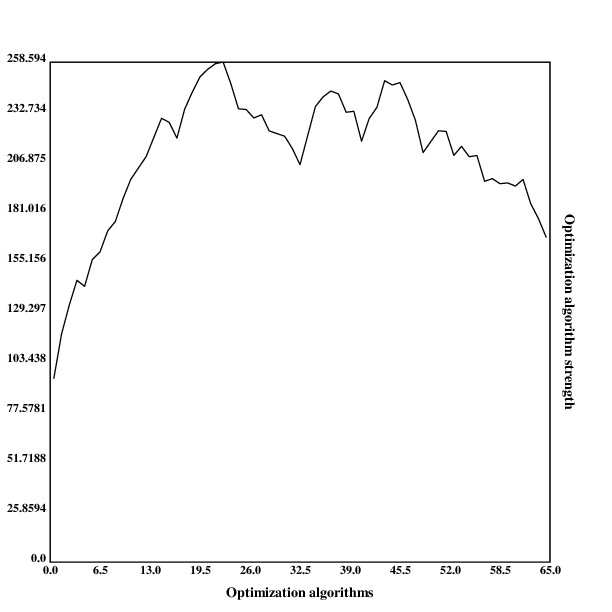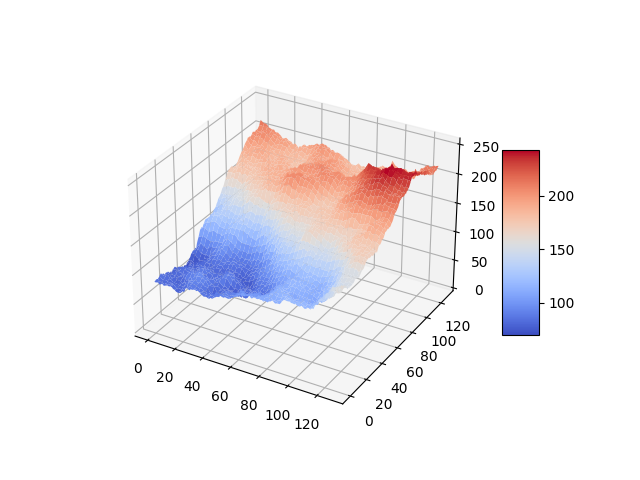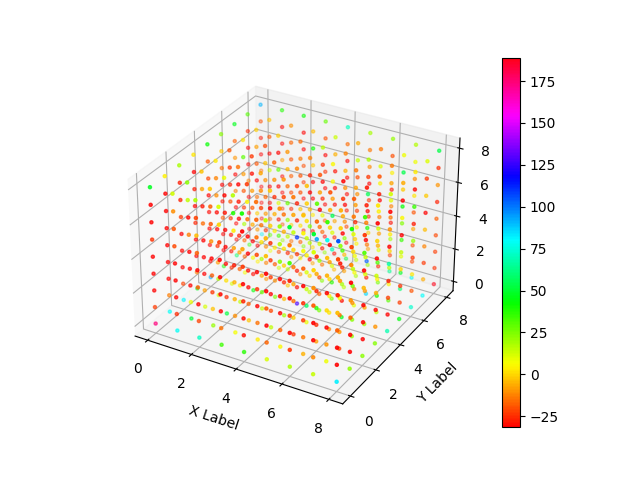
author: niplav, created: 2020-11-20, modified: 2024-01-26, language: english, status: notes, importance: 4, confidence: highly likely
The Diamond-Square algorithm is a terrain-generation algorithm for two dimensions (producing a three-dimensional terrain). I generalize the algorithm to any positive number of dimensions, and analyze the resulting algorithm.
Libre de la metáfora y del mito
labra un arduo cristal: el infinito
mapa de Aquel que es todas Sus estrellas.
— Jorge Luis Borges, “Spinoza”, 1964
I learned of the diamond-square algorithm by reading through the archives of Chris Wellon's blog, specifically his post on noise fractals and terrain generation. The algorithm is a fairly simple and old one (dating back to the 80s), but not being interested in graphics or game programming, I shelved it as a curiosity.
However, a while later I needed a way to generate high-dimensional landscapes for a simulation, and remembered the algorithm, I felt like I could contribute something here by generalizing the algorithm to produce landscapes in an arbitrary number of dimensions, and that this would be a fun challenge to sharpen my (then fairly weak) Python and numpy skills.
The original (2-dimensional) diamond-square algorithm (in its simplest
form) starts with a $2^n+1 \times 2^n+1$ array of numbers.
Code here.


